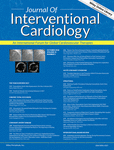Intravascular ultrasound guided wiring re-entry technique for complex chronic total occlusions
Abstract
Background
The successful recanalization rate of chronic total occlusion (CTO) lesions without retrograde collaterals available is always low. Intravascular ultrasound (IVUS) may be useful to guide the subintimal guidewire to re-enter the true lumen. We evaluated the clinical feasibility and efficacy of the IVUS-guided wiring re-entry technique for these complex CTO lesions.
Methods
Twenty consecutive patients (19 male, mean age: 65.3 ± 12.8 years) with both failed antegrade and retrograde approaches were enrolled. The IVUS catheter was introduced into the subintimal space to identify the entry point into the subintimal space, and guide another stiff wire to re-enter the true lumen with the adjacent side-branch or first wire as markers, or using IVUS-guided parallel wire technique.
Results
The entry point into the subintimal space was identified by IVUS in all cases, and the IVUS-guided wiring re-entry technique succeeded in 17 cases (85%). No procedure-related complication was noted except one case of delayed cardiac tamponade due to the wire perforation. During the mean follow-up period of 1.9 ± 1.3 years, there was no adverse cardiac event, except one patient died of the complication of cardiac transplantation.
Conclusion
The IVUS-guided wiringre-entry technique might be feasible and safe for the recanalization of complex CTO lesions.




